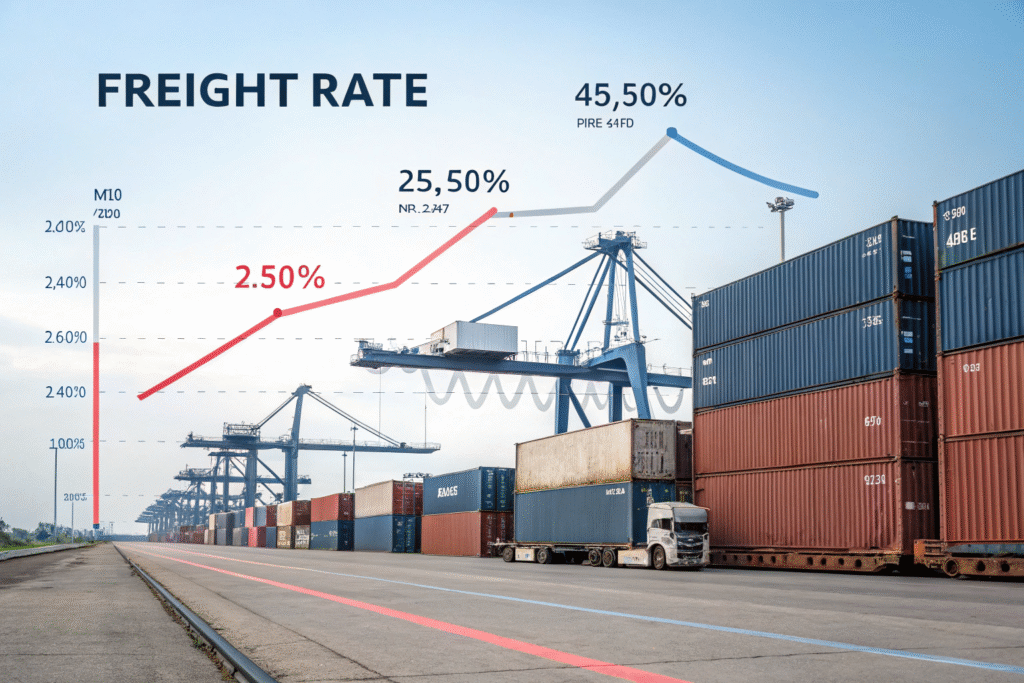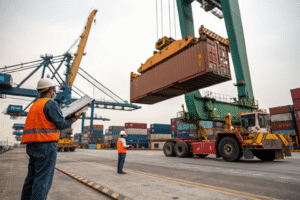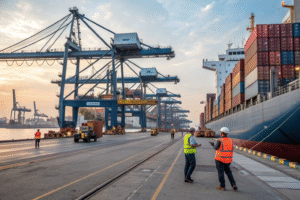The past few months have sent shockwaves through the freight forwarding industry—spot rates on the Transpacific trade lane have dropped closer to cost levels than we've seen in years. If you're shipping large volumes of clothing, accessories, or promotional items from China to the U.S., this market change could be a game-changer—or a threat to your logistics planning.
Yes, the Transpacific spot rate is nearing cost-level thresholds, which may sound good at first glance. But this shift carries both opportunities and risks depending on how well you understand market timing, contract dynamics, and rate sustainability.
If you’re a volume shipper like Ron, a confident U.S. business owner sourcing from China, this article will walk you through the implications for your budget—and how you can turn market turbulence into leverage.
Why Are Spot Rates Dropping on the Transpacific Route?
Spot rate drops don’t happen overnight. Behind every cent shaved off a container cost is a mix of vessel overcapacity, seasonal demand mismatches, and strategic pricing wars. The Transpacific market is no different.
Spot rates from China to the U.S. West Coast have been dropping due to oversupply and early inventory movements, with many freight forwarders reporting levels just above breakeven operating costs.

What Caused the Current Spot Rate Decline?
The root cause of this decline is overcapacity. Major carriers added ships in response to 2021–2022 demand spikes, but demand has normalized while vessel supply remains high. As a result, carriers are engaging in rate wars just to fill slots, bringing rates dangerously close to operating costs. Sites like FreightWaves and The Loadstar confirm that average rates have dipped below $2,000/FEU in July 2025.
How Do Blank Sailings Factor Into This?
Carriers are attempting to stop the bleeding with blank sailings, which are cancellations of scheduled voyages. But these reactive measures haven’t been enough to stabilize rates. The imbalance is especially acute at major Chinese ports like Ningbo and Yantian, where ship space is available but cargo isn’t keeping pace.
Can You Rely on Low Spot Rates Long-Term?
While low spot rates feel like a victory in the short term, banking on them long-term can disrupt your financial planning and supply chain reliability.
No, low spot rates are rarely sustainable. They fluctuate with market volatility, carrier strategy, and seasonal surges. Long-term planning demands a balance of spot and contract agreements.

Should You Switch from Contract to Spot Booking?
If your volumes are consistent, you might feel tempted to shift entirely to spot bookings to capture today’s low rates. But beware—spot rates can surge quickly during Q4 peak season or if new tariffs hit. According to JOC, spot rate volatility can expose buyers to 30%+ cost swings within weeks.
How Do Contracts Help in Unstable Markets?
Freight contracts offer rate stability and space guarantees. In volatile markets, hybrid models are trending—buyers lock part of their volume in fixed-rate contracts while floating the rest on spot. This strategy is supported by Drewry, which recommends diversified procurement plans when spot rates approach cost level.
How Should You Adjust Your Freight Budget Strategy?
Budgeting becomes a guessing game if your freight rates aren’t aligned with the market’s real-time conditions. Adjusting your forecast now can save headaches and lost margins later.
To protect your margins, you should revise your freight budgeting model to reflect short-term spot advantages without compromising long-term cost security.

What Line Items in Your Budget Need Adjustment?
Begin with your per-unit freight cost. If you're paying $2,300/FEU in Q1 but spot rates are now at $1,800, you can reduce your cost projections. Update your landed cost calculator to reflect real-time quotes from your forwarder.
Also, examine your buffer costs—do you really need a 20% freight contingency in this market? According to Flexport, many shippers are now adjusting buffer rates down to 10%.
How Often Should You Re-Evaluate Freight Plans?
In volatile spot environments, reevaluating your logistics cost structure every two weeks is optimal. If you’re using a forwarder like GeeseCargo, you can request biweekly market updates so your forecasts stay in tune with industry trends and port congestion reports.
How Can Freight Forwarders Like GeeseCargo Help?
If you’re navigating rate drops, you need more than just cheap prices—you need a partner who understands how to respond when the market moves fast.
Freight forwarders like GeeseCargo offer proactive guidance, real-time rate tracking, and smart routing to help buyers take advantage of cost-level spot rates without compromising reliability.

What Makes a Freight Forwarder Valuable in Down Markets?
In low-rate environments, forwarders can optimize routing through alternative ports, offer DDP shipping to avoid surprise tariffs, and negotiate priority space on overbooked vessels. GeeseCargo, with our long-standing relationships at key ports like LA, Long Beach, and Rotterdam, often secures space even during disruption.
How Does GeeseCargo Tailor to Budget-Conscious Shippers?
We offer blended pricing packages that adapt to your shipment volume and urgency. With our in-house customs brokers, we simplify clearance procedures, reducing port delays and demurrage charges. For clients like Ron, this has saved up to 17% on total landed cost during low-rate windows.
Conclusion
While falling spot rates on the Transpacific route might sound like good news, they are a double-edged sword. They present short-term savings but come with long-term unpredictability. As a seasoned freight partner, GeeseCargo helps our clients ride these waves with confidence. We guide you through every shipping scenario—from peak season spikes to cost-level dips—with proactive rate insights and tailored logistics solutions.
By staying informed, balancing your booking strategy, and partnering with a forwarder who puts your bottom line first, you’re not just reacting to market shifts—you’re profiting from them.









